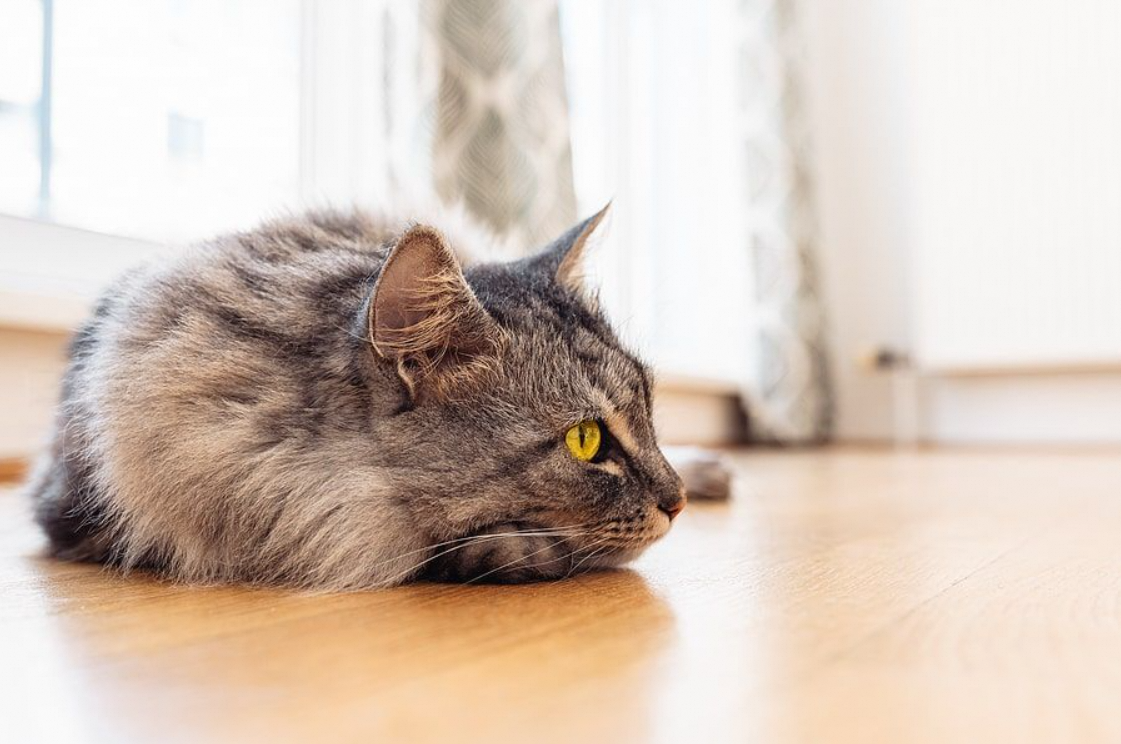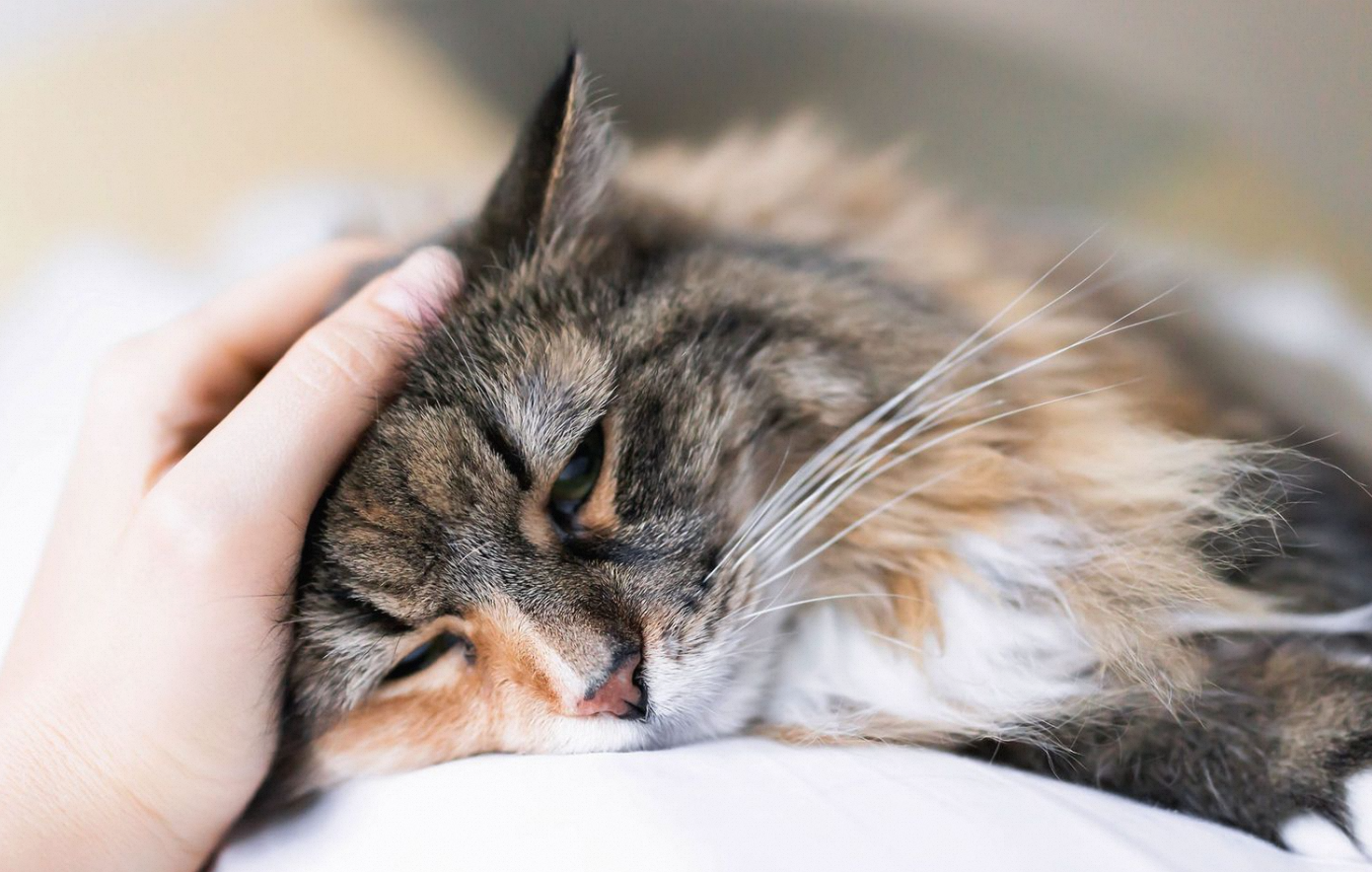Seeing your cat vomit can be worrying for any pet owner. While occasional vomiting is normal, frequent or prolonged vomiting episodes indicate an underlying health issue that requires veterinary attention. It’s especially concerning when you notice yellow liquid in your cat’s vomit. Understanding the potential causes and taking preventative steps is important for your cat’s wellbeing.
In This Article
Why does my cat vomit yellow liquid?
It can be alarming for cat owners to see their furry companions throwing up yellow fluid. This unusual colored vomit often signals an underlying health condition that requires veterinary attention. Common culprits include accumulation of yellow bile when a cat has an empty stomach for too long. Liver dysfunction or inflammation conditions like hepatitis or pancreatitis can also overproduce bile, leading to yellow cat vomit. Parasitic infections in the digestive tract may additionally cause yellow liquid vomit.
 While occasional vomiting is normal, prolonged episodes, lethargy, diarrhea or other concerning symptoms should prompt a vet visit. After diagnosis, typical treatment may involve anti-nausea medication, bland diets, rehydration therapy, antibiotics, or specialized mediations depending on the cause. Prevention is key, so cat owners should feed frequent small meals, avoid food allergies, limit toxin exposure, use monthly parasite control and schedule annual checkups. Staying alert to subtle signs of illness allows early intervention to resolve health issues before they progress. Vomiting yellow fluid alerts cat owners to take their feline companions seriously and seek prompt veterinary attention.
While occasional vomiting is normal, prolonged episodes, lethargy, diarrhea or other concerning symptoms should prompt a vet visit. After diagnosis, typical treatment may involve anti-nausea medication, bland diets, rehydration therapy, antibiotics, or specialized mediations depending on the cause. Prevention is key, so cat owners should feed frequent small meals, avoid food allergies, limit toxin exposure, use monthly parasite control and schedule annual checkups. Staying alert to subtle signs of illness allows early intervention to resolve health issues before they progress. Vomiting yellow fluid alerts cat owners to take their feline companions seriously and seek prompt veterinary attention.
What to do if your cat is throwing up yellow liquid?
Seeing your feline companion throw up yellow fluid can be alarming. While an occasional episode of vomiting is normal, repeated or prolonged vomiting of yellow liquid indicates an underlying health problem requiring veterinary attention. If your cat vomits yellow fluid more than once or shows concerning symptoms like lethargy, appetite loss or diarrhea, promptly contact your vet. Provide details on the timing, frequency, volume and consistency of the vomit to aid diagnosis.
Your vet will likely run tests like blood work, fecal analysis for parasites, urine evaluation and imaging scans to pinpoint the issue. Based on exam findings and test results, they will recommend appropriate treatment, which may include anti-nausea medication, intravenous fluids, dietary changes, deworming medication, antibiotics, steroids, or other medications tailored to the diagnosis.
 Until the cause is identified and treated, encourage food and water intake to prevent dehydration and malnutrition. Offer small, frequent meals of bland, easy-to-digest food. Watch closely for deterioration and return promptly to the vet if symptoms persist more than a day or two. They may need to adjust medications or provide additional supportive treatment. Most vomiting causes can be successfully managed with prompt veterinary attention. Stick closely to your vet’s recommendations to help resolve your cat’s bout of yellow liquid vomiting.
Until the cause is identified and treated, encourage food and water intake to prevent dehydration and malnutrition. Offer small, frequent meals of bland, easy-to-digest food. Watch closely for deterioration and return promptly to the vet if symptoms persist more than a day or two. They may need to adjust medications or provide additional supportive treatment. Most vomiting causes can be successfully managed with prompt veterinary attention. Stick closely to your vet’s recommendations to help resolve your cat’s bout of yellow liquid vomiting.
Treatment for vomiting in cats
When cats suffer from prolonged or recurrent vomiting episodes, targeted treatment is needed to resolve the underlying condition. An acute vomiting bout often settles after a cat empties their stomach contents. However, ongoing nausea and vomiting indicates other measures must be taken to stop further deterioration.
After diagnosing the cause of your cat’s vomiting through history, exams and testing, your veterinarian will recommend appropriate treatment tailored to the specific diagnosis. Mild cases may be treated on an outpatient basis with medications dispensed from the vet clinic. More severe cases prone to dehydration and malnutrition may be hospitalized for intravenous fluid therapy, injectable medications and close monitoring.
 Anti-nausea drugs called antiemetics, like Cerenia, are commonly prescribed to control vomiting alongside medications to treat the underlying disease. Dietary changes to a bland, easily digestible food may also be recommended during recovery. Other treatment elements your vet may advise include antibiotics for infection, steroids and immunosuppressants for inflammation-related conditions, dewormers for parasites or surgery for foreign body removal or correction of anatomical abnormalities. Follow up closely with your veterinarian to monitor your cat’s response to prescribed therapy and make adjustments as needed for the best outcome.
Anti-nausea drugs called antiemetics, like Cerenia, are commonly prescribed to control vomiting alongside medications to treat the underlying disease. Dietary changes to a bland, easily digestible food may also be recommended during recovery. Other treatment elements your vet may advise include antibiotics for infection, steroids and immunosuppressants for inflammation-related conditions, dewormers for parasites or surgery for foreign body removal or correction of anatomical abnormalities. Follow up closely with your veterinarian to monitor your cat’s response to prescribed therapy and make adjustments as needed for the best outcome.
How to prevent vomiting in cats
While the occasional vomit is normal, cat owners understandably want to minimize unpleasant episodes of their feline companions throwing up. By better understanding common triggers and taking some proactive steps, you can help prevent and reduce vomiting events:
Feed smaller, more frequent meals rather than leaving large volumes of food out at once. Make gradual food transitions over 5-7 days when changing formulas to avoid dietary upsets. Choose digestible, hairball-control diets tailored for cats prone to vomiting. Use monthly heartworm, flea and tick prevention to reduce parasitic infections which can cause vomiting. Clean litter boxes frequently and limit toxin exposure to avoid foreign body ingestion issues leading to vomiting.
 Schedule annual veterinary checkups to monitor your cat’s health, treat medical conditions early and maintain vaccinations to prevent infectious causes of vomiting. Knowing your cat’s normal behavior equips you to recognize subtle signs of illness requiring prompt veterinary care. Record episodes to identify patterns related to diet, activity levels or stress triggers.
Schedule annual veterinary checkups to monitor your cat’s health, treat medical conditions early and maintain vaccinations to prevent infectious causes of vomiting. Knowing your cat’s normal behavior equips you to recognize subtle signs of illness requiring prompt veterinary care. Record episodes to identify patterns related to diet, activity levels or stress triggers.
While vomiting frequency differs among cats, implementing some awareness, preventative care and environmental adjustments makes a big difference in managing cat vomiting. Consult your veterinarian if episodes persist to address the underlying cause.
As a devoted cat owner, coming across episodes of yellow liquid cat vomit can certainly be alarming. While an occasional vomit is normal, prolonged bouts of throwing up yellow fluid suggest an underlying health issue needing veterinary attention. By understanding what’s causing this unusual colored vomit, closely observing your cat, and taking proactive measures, you can minimize concerning vomiting incidents.
Final
The most common reasons cats vomit yellow liquid include accumulation of yellow bile from an empty stomach, liver disease leading to excess bile production, pancreatitis causing reduced bile processing, intestinal infections from parasites or bacteria, and other systemic illnesses. While acute vomiting may resolve on its own, chronic nausea and throwing up yellow fluid indicates your cat requires specific treatment tailored to the diagnosed cause after veterinary testing.
 Make note of any lethargy, appetite changes or other concerning symptoms occurring alongside yellow vomit episodes. Track details on timing, volume and specifics about your cat’s vomit to best inform your veterinarian. Watch closely for signs of dehydration or deterioration. Seek prompt veterinary attention if symptoms persist more than a day without improvement.
Make note of any lethargy, appetite changes or other concerning symptoms occurring alongside yellow vomit episodes. Track details on timing, volume and specifics about your cat’s vomit to best inform your veterinarian. Watch closely for signs of dehydration or deterioration. Seek prompt veterinary attention if symptoms persist more than a day without improvement.
On the preventative side, feed small frequent meals, transition food gradually, use hairball control diets, avoid known allergens, limit toxin exposure, stick to monthly parasite prevention regimens, frequently scoop litter boxes, and maintain annual veterinary visits. Know your cat’s usual behaviors to better identify subtle signs of illness needing early care. Staying informed, observant and proactive empowers you to intervene promptly when health issues arise and help your beloved cat live comfortably.
